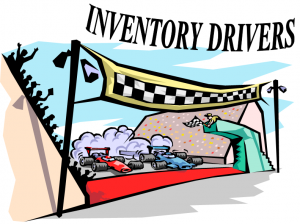 In the last couple of postings I have talked about both Inbound and Outbound Lead Time. In this posting I want to concentrate on internal lead time. This is actually a mix of several different types of lead time. The total internal lead time is a combination of the length of time to process a customer order into the system, generate a production order, acquire any needed stock, produce the material, move it to the shipping department and actually ship it. There is still the shipping time to get it from your facility to the customer but that was discussed in the earlier posting on outbound lead time. Changing the length of each of these lead time elements will have a direct and often dramatic effect on inventory levels. For example, you can decouple the production and purchasing lead time elements by using a make to stock format. Of course this requires that you keep enough finished goods on hand to satisfy demand until the next production run. An effective Lean Six Sigma program can help to decrease the replenishment time and therefore reduce the required finished goods inventory.
In the last couple of postings I have talked about both Inbound and Outbound Lead Time. In this posting I want to concentrate on internal lead time. This is actually a mix of several different types of lead time. The total internal lead time is a combination of the length of time to process a customer order into the system, generate a production order, acquire any needed stock, produce the material, move it to the shipping department and actually ship it. There is still the shipping time to get it from your facility to the customer but that was discussed in the earlier posting on outbound lead time. Changing the length of each of these lead time elements will have a direct and often dramatic effect on inventory levels. For example, you can decouple the production and purchasing lead time elements by using a make to stock format. Of course this requires that you keep enough finished goods on hand to satisfy demand until the next production run. An effective Lean Six Sigma program can help to decrease the replenishment time and therefore reduce the required finished goods inventory.
From an inventory point of view, internal paperwork is an often overlooked inventory driver. After all, why would an extra day or two in processing the paperwork affect inventory? Part of the problem is that paperwork is symptomatic. If it is slow in one area it will usually be slow in other areas. This leads to material sitting in queue or waiting to be moved to the next stage. The longer it takes to move from raw material arriving to finished goods leaving the more inventory of all types (raw, WIP & finished goods) will be left sitting around. In addition it increases the total lead time before the material arrives at the customer which will inevitably lead to order expediting. You can pretty much guarantee that any company with persistent expediting at any point in the supply chain is going to start drifting their inventory levels up to avoid the expediting. Again, implementing an effective Lean Six Sigma program is a much better response to expediting issues than increasing inventory would be. Clean up all the information system, provide fast, EASY and effective methods to place orders, make delays visible to everyone and the pressure for increased inventory levels will drop dramatically.
Finally, there are the logistics, warehouse and shipping processes. The number of ways that orders can be slowed in this area seems almost infinite some days. Again, the key to controlling this area is fast, accurate and timely information flow, both to initiate action and to report activity. Any delay in reporting movement of material is reflected in inventory accuracy measures (inventory in the system is incorrect until the movement is reported) and decreasing accuracy drives up safety stock which drives up total inventory. The larger the inventory the harder it is to find and accurately count whatever you are looking for which will tend to drive accuracy further down. This vicious circle or spiral of death is very painful to stop. While an effective cycle count program will help, ultimately the Root Cause is the delays in recording transactions. Speeding up information velocity will automatically improve accuracy which will reduce the upward pressure on inventory levels. Now instead of a death spiral you have a self re-inforcing improvement spiral. Increased inventory also leads to decreased available warehouse capacity which, again, tends to decrease inventory accuracy. No cycle count program is ever going to identify this as an issue and I have yet to see a root cause report that says “could not find the material because we have too much stuff in the warehouse”. The decreased accuracy combined with the sheer pain of finding and getting to stock needing to be shipped tends to slow down shipment of material, which increases lead time and stock on hand. Once again, this reduces available capacity, etc and you are back into a death spiral. Reducing inventory or increasing capacity is the only way to stop this. Of the two, reducing inventory is often the cheapest and may be the fastest as well.
Bottom line – failure to control your internal processes will create pressure for increased inventory levels. This will, in turn, create pressure for longer internal lead times, leading to pressure for increased inventory, etc. Once this death spiral starts it is very difficult to stop because most organizations do not address the correct root cause – internal processes. Right now would be a really good time to stop and consider how fast, accurate, easy and visible your information system is.
How is your Inventory Optimization program working?
Are you trying to better understand how all the drivers interact to drive your inventory levels up? Need help getting your Inventory program to be all it can be? Contact Ed White at Jade Trillium Consulting to discuss how you might best control and improve your inventory optimization program.
Next posting we will explore cycle counts – what is it and what are the precursors required for a successful implementation. In the meantime, enjoy thinking about this topic. Talk to your friends and co-workers about their experience and thoughts on this topic, especially what it means for your organization. And, as always, I would love to hear back on your (and their) thoughts.

You must log in to post a comment.